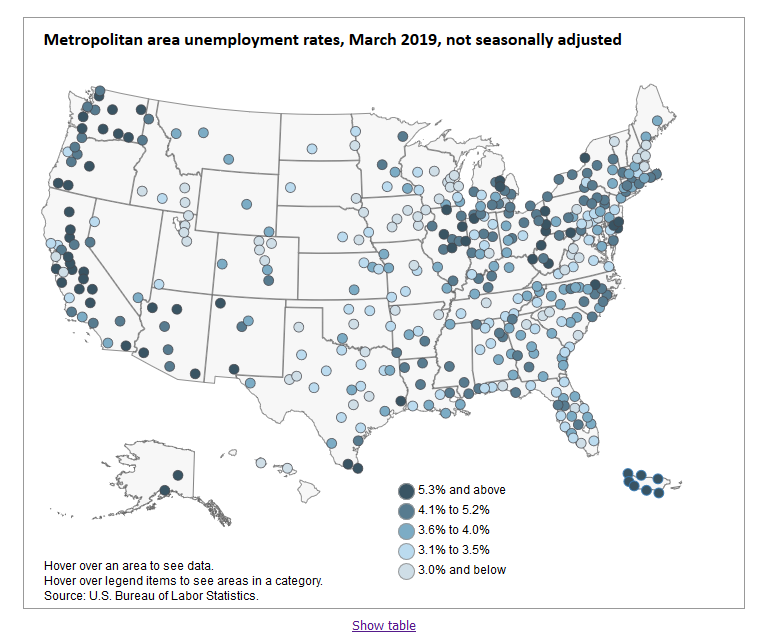Employment Blog May 2019
May Employment Blog is from the US Department of Labor, Bureau of Labor Statistics. In April, nonfarm payroll employment increased by 263,000, and the unemployment rate declined to 3.6 percent. Over the month, notable job gains occurred in professional and business services, construction, health care, and social assistance. The April employment gain compares with an average monthly gain of 213,000 over the prior 12 months. (The prior 12-month average incorporates revisions for February and March, which increased nonfarm payroll employment by 16,000 on net.)
Employment in professional and business services increased by 76,000 in April. Job gains occurred in administrative and support services (+53,000) and computer systems design and related services (+14,000). Over the past 12 months, professional and business services has added 535,000 jobs.
Construction employment rose by 33,000 in April, with gains occurring in nonresidential specialty trade contractors (+22,000) and in heavy and civil engineering construction (+10,000). Over the past 12 months, construction employment has increased by 256,000.
Employment in health care increased by 27,000 in April and 404,000 over the past 12 months. In April, job gains occurred in ambulatory health care services (+17,000), hospitals (+8,000), and community care facilities for the elderly (+7,000).
Social assistance added 26,000 jobs over the month, with all of the gain occurring in individual and family services. Over the past 12 months, employment in social assistance has increased by 120,000.
Employment continued to trend up in financial activities in April (+12,000). Over the past year, the industry has added 110,000 jobs.
In April, manufacturing employment changed little for the third month in a row (+4,000). In the 12 months prior to February, manufacturing had added an average of 22,000 jobs per month.
Retail trade employment changed little in April (-12,000). General merchandise stores lost 9,000 jobs, while motor vehicle and parts dealers added 8,000 jobs.
Employment in other major industries–including mining, wholesale trade, transportation and warehousing, information, leisure and hospitality, and government–showed little change over the month.
Average hourly earnings of all employees on private nonfarm payrolls rose by 6 cents in April to $27.77, following a 5-cent gain in March. Over the past 12 months, average hourly earnings have risen by 3.2 percent; the over-the-year percent change has been 3.0 percent or above for 9 consecutive months. From March 2018 to March 2019, the Consumer Price Index for All Urban Consumers (CPI-U) increased by 1.9 percent (on a seasonally adjusted basis).
Turning to measures from the survey of households, the unemployment rate declined by 0.2 percentage point to 3.6 percent in April, the lowest rate since December 1969. Over the month, the number of unemployed people fell by 387,000 to 5.8 million. Among the unemployed, the number of people searching for work for 27 weeks or more was little changed at 1.2 million in April. These long-term unemployed accounted for 21.1 percent of the unemployed.
The labor force participation rate decreased by 0.2 percentage point to 62.8 percent in April but was unchanged from a year earlier. The employment-population ratio, at 60.6 percent, was unchanged over the month.
In April, 4.7 million people were working part time for economic reasons (also referred to as involuntary part-time workers), little changed from the previous month. Among those neither working nor looking for work in April, 1.4 million were considered marginally attached to the labor force, little changed from a year earlier. (People who are marginally attached to the labor force had not looked for work in the 4 weeks prior to the survey but wanted a job, were available for work, and had looked for a job within the last 12 months.) Discouraged workers, a subset of the marginally attached who believed no jobs were available for them, numbered 454,000 in April, also little changed from a year earlier.
Chart 1 provides unemployment rates by major metropolitan areas throughout the United States.

